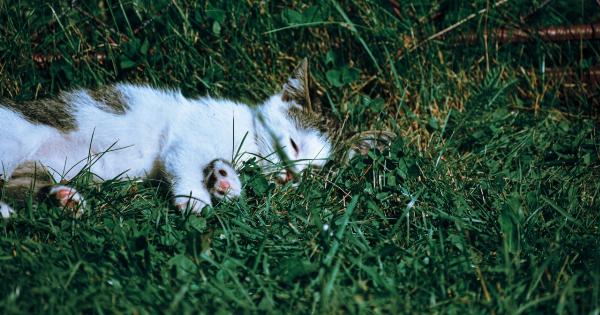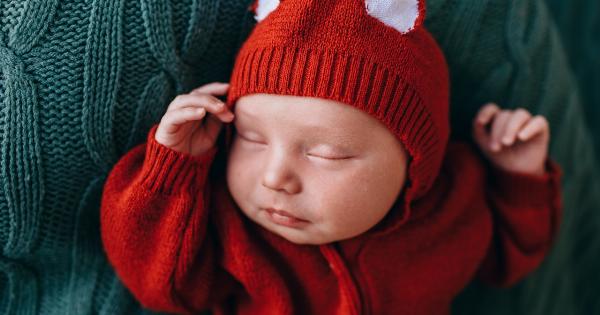Sleep is an essential aspect of a child’s overall development and well-being. Not only does it ensure physical rest, but it also plays a crucial role in cognitive and emotional development.
Understanding the different levels of sleep that children reach is important in order to promote healthy sleep habits and address any sleep-related concerns that may arise.
Stage 1: NREM Sleep
During the initial stage of sleep, known as non-rapid eye movement (NREM) sleep, children enter a light sleep phase. This stage typically lasts for a brief period, lasting only a few minutes.
Their muscles begin to relax, and their eye movements become slower. In this stage, it is relatively easy to wake children up.
Stage 2: NREM Sleep
In the second stage of NREM sleep, children further relax and reach a slightly deeper level of sleep. This stage is characterized by slower brain waves and a decreased heart rate.
Although still relatively light, children are less likely to wake up during this stage compared to stage 1. It is during this stage that occasional bursts of rapid brain waves, also known as sleep spindles, may occur.
Stage 3: NREM Sleep
Stage 3 of NREM sleep is often referred to as deep sleep or slow-wave sleep (SWS). It is during this stage that children experience the deepest level of sleep, and it becomes progressively more challenging to wake them up.
The brain waves during this stage are significantly slower than in previous stages. It is also during this stage that important processes take place, such as tissue repair, growth, and development.
REM Sleep
Rapid eye movement (REM) sleep is the stage where dreaming occurs. Although commonly associated with adults, children also experience REM sleep.
During this stage, brain activity increases, and children may exhibit rapid eye movements, irregular breathing, and increased heart rate. Muscles are profoundly relaxed, and children may even experience temporary paralysis, which serves as a protective mechanism preventing them from acting out their dreams.
Sleep Cycles
Sleep cycles consist of a progression through different stages of sleep. They typically last around 60-90 minutes and repeat cyclically throughout the night.
While adults go through approximately five sleep cycles, children, especially infants, experience shorter sleep cycles.
Newborn Sleep Patterns
Newborns have a unique sleep pattern characterized by shorter sleep cycles and a higher proportion of REM sleep. They spend a significant amount of time in REM sleep, which is believed to contribute to their brain development.
It is normal for newborns to spend up to 50% of their sleep time in REM sleep, gradually decreasing as they grow.
Infant Sleep Patterns
As infants mature, their sleep patterns change. They spend more time in light sleep and less time in deeper stages of NREM sleep. The proportion of REM sleep decreases as they transition into a more regular sleep-wake cycle.
Infants often wake up during the transition between sleep cycles, requiring assistance to fall back asleep.
Toddler Sleep Patterns
Toddlers continue to refine their sleep patterns, spending less time in light sleep and more time in stage 3 of NREM sleep.
By this stage, toddlers typically have a consistent sleep routine, although they may still occasionally experience difficulty falling asleep or staying asleep throughout the night.
Preschooler Sleep Patterns
Preschoolers generally require about 10-12 hours of sleep per night. They spend most of their sleep time in NREM sleep, particularly in stage 3.
However, they still experience a considerable amount of REM sleep, which contributes to their imagination and creativity. Nightmares and night terrors may occasionally occur during this stage.
Elementary School Age Sleep Patterns
During the elementary school years, children’s sleep patterns become more adult-like. They spend about 20-25% of their sleep time in REM sleep, and their deep sleep stages become more consolidated.
Children in this age group need around 9-11 hours of sleep per night to support their growth, learning, and overall development.
Adolescent Sleep Patterns
As children enter adolescence, their sleep patterns undergo significant changes. They experience a delay in their internal body clock, making it more challenging for them to fall asleep early in the evening.
This shift often leads to inadequate sleep, as early school start times may not align with their natural sleep-wake rhythm. Adolescents require approximately 8-10 hours of sleep, but many struggle to meet this requirement.
Common Sleep Concerns
While understanding the different levels of sleep that children reach is important, it is equally crucial to be aware of common sleep concerns that may arise.
These can include difficulties falling asleep, nighttime awakenings, nightmares, sleepwalking, and sleep disorders such as sleep apnea or restless leg syndrome. Identifying and addressing these concerns helps promote healthy sleep habits and optimal well-being.
Conclusion
Sleep plays a vital role in a child’s overall growth and development. From newborns to adolescents, children experience various levels of sleep that contribute to their physical, cognitive, and emotional well-being.
By understanding these sleep patterns and addressing any sleep concerns that arise, parents and caregivers can support healthy sleep habits and ensure their children receive the restorative rest they need to thrive.































